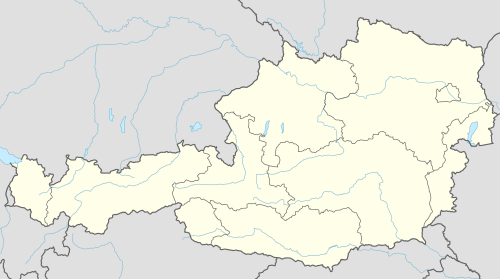Diex
| Diex | ||
|---|---|---|
| ||
 Diex Location within Austria | ||
| Coordinates: 46°45′N 14°37′E / 46.750°N 14.617°ECoordinates: 46°45′N 14°37′E / 46.750°N 14.617°E | ||
| Country | Austria | |
| State | Carinthia | |
| District | Völkermarkt | |
| Government | ||
| • Mayor | Anton Polessnig | |
| Area | ||
| • Total | 54.9 km2 (21.2 sq mi) | |
| Elevation | 1,159 m (3,802 ft) | |
| Population (1 January 2016)[1] | ||
| • Total | 837 | |
| • Density | 15/km2 (39/sq mi) | |
| Time zone | CET (UTC+1) | |
| • Summer (DST) | CEST (UTC+2) | |
| Postal code | 9103 | |
| Area code | 04231 | |
| Website | www.sonnenort-diex.at | |
Diex (Slovene: Djekše) is a town in the district of Völkermarkt in Austrian state of Carinthia. It is known for its Gothic fortified church on a hilltop.
Geography
Diex lies in southeast Carinthia on the southern slope of the Saualpe high above the Jaun valley and the Lavant valley.
Population
| Village | Number of people 1991 | Percent of Slovenes 1991 | Percent of Slovenes 1951 |
|---|---|---|---|
| Haimburgerberg / Vovbrška Gora | 177 | 24.9% | 86.9% |
| Bösenort / Hudi Kraj | 91 | 14.3% | 30.4% |
| Grossenegg / Tolsti Vrh | 53 | 17% | 96.3% |
| Grafenbach / Kneža | 130 | 10.8% | 12.3% |
References
| Wikimedia Commons has media related to Diex. |
This article is issued from Wikipedia - version of the 12/9/2013. The text is available under the Creative Commons Attribution/Share Alike but additional terms may apply for the media files.
